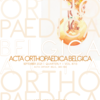One sacroiliac screw for posterior ring fixation in unstable pelvic fractures
unstable pelvic fracture ; percutaneous iliosacral screws ; pelvis fractures ; sacroiliac joint ; single iliosacral screw
Published online: Nov 22 2021
Abstract
Unstable pelvic injuries are considered uncommon and they are usually associated with high rate of morbidity and mortality. High energy blunt trauma and falling from height are usually the main mechanism of injury.
It is a retrospective study that was performed in academic level I trauma center. From September 2015 to December 2019, a consecutive series of 26 patients (7 females), with average age of 32 years with unstable pelvic fracture were included in this study. All patients underwent reduction and percutaneous fixation with one sacroiliac screw posteriorly for each sacroiliac joint and anterior arch fixation of the pelvic ring with either platting or external fixator. The average duration of follow up was 36 months.
Clinical results: at the final follow-up, all patients had complete radiological healing of the fractures. The subjective functional assessment yielded excellent for twenty-two patients, good for two patients and fair for two patients.
Posterior arch fixation of the pelvic ring with one sacroiliac screw beside anterior arch fixation in unstable fracture pelvis is a sufficient fixation method to maintain the requiring stability to allow complete union of the fracture.
Level of Evidence: Therapeutic Level III.
